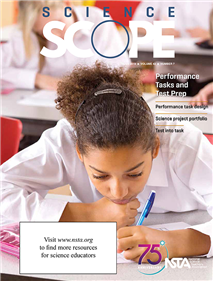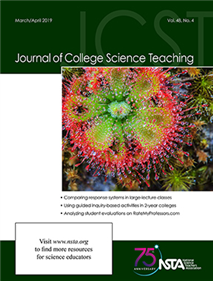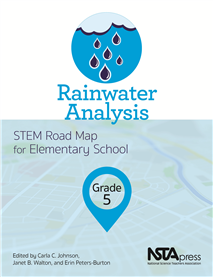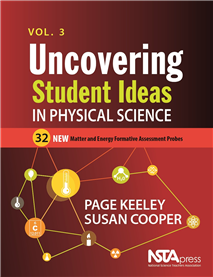All Resources
Journal Article
Apply science and engineering practices to design and build an amusement park ride based on a Hollywood film. ...
Journal Article
Learn how to build a summative performance assessment from a standardized test question. ...
Journal Article
Assessing Performance Expectations
A note from the Editor about this issue's theme ...
By Patty McGinnis
Journal Article
How Can Middle School Science Fairs Help Students Meet Science Standards?
Applying best research-based practices ...
By Jacqueline Delisi, Marian Pasquale
Journal Article
By Kira Lowery, Shelly Rodriguez, and Patrick R. Benfield
Journal Article
Game for the Good With Stall Catchers Citizen Science
Collaborative science projects you can join ...
Journal Article
Teaching Nonfiction Text Structure
Bringing other subjects into the science classroom ...
Journal Article
Three-Dimensional Classroom Assessment Tasks
Practical advice from veteran teachers ...
By Susan German
Journal Article
Exploring maker spaces, engineering, and more ...
By Pamela Segal, Montana McCormick
Journal Article
The Poetry of Science: Poetry in Motion
Building literacy in playful, meaningful ways....
Journal Article
A study of tops allowed third graders to explore the toys of past generations while learning about engineering design....
Journal Article
Supporting second-grade students’ thinking using the PEOE strategy...
Journal Article
Pushes, Pulls, and Playgrounds
Learning forces and motion through nonfiction texts and exploration on the playground...
Journal Article
Engineering Encounters: Balancing Engineering and Science Instruction
This column describes creating a classroom culture for engineering. This issue describes how to teach third graders about balanced and unbalanced forces....
Journal Article
Science 101: What’s Wrong With “For Every Action, There is an Equal and Opposite Reaction”?
This column provides background science information for elementary teachers. This issue explores Newton's third law of motion....
Journal Article
Teaching Teachers: Evolving the Physics Mindset
This column enhances the repertoire of preservice and inservice teachers. Changing perceptions and attitudes toward the teaching and learning of physical science...
Journal Article
Methods and Strategies: Scaffolding for Failure
This column provides ideas and techniques to enhance your science teaching. This issue helps students navigate Engineering Design Failure. ...
Journal Article
Good News for Post-Secondary Educators
The Journal of College Science Teaching’s editor shares thoughts regarding the current issue. ...
By David Wojnowski, PhD, Elizabeth Allan, PhD
Journal Article
Technology Meets Pedagogy: Comparing Classroom Response Systems
The author of this article explores the impact of different student response systems in successive years in a general education human biology course. ...
By Andrew J. Petto
Book Chapter
Rainwater Analysis, Grade 5: STEM Road Map for Elementary School (Book Sample)
What if you could challenge your fifth graders to design rainwater recycling systems to provide water for a fictional community garden? With this volume in the STEM Road Map Curriculum Series, you can! Rainwater Analysis outlines a journey that wi...
Book Chapter
Have you been wanting to probe your students’ thinking about major concepts in matter and energy? Have you been wishing for formative assessment tools in both English and Spanish? Then this is the book you’ve been waiting for. Like the other ...
Journal Article
Preschoolers investigate force and motion with a digital journal....
By Ashley Lewis Presser, Ximena Dominguez, Marion Goldstein, Regan Vidiksis, and Danae Kamdar







